

World Heritage Sites
designated by
UNESCO
the World Heritage Committee has inscribed 890 properties on the World Heritage List
The following are some I have visited:
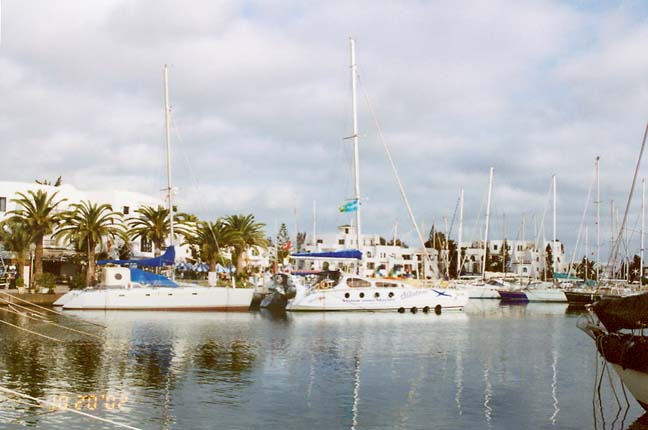
modern harbor of Sousse
Sousse, an important commercial and military port in the times of the Aghlabites (800-909), is a typical example of a town dating from the first centuries of Islam. With its kasbah, its ramparts, its medina (with the Great Mosque), the Bu Ftata Mosque and its typical ribat, at the same time a fort and religious building, Sousse formed part of a coastal defence system.
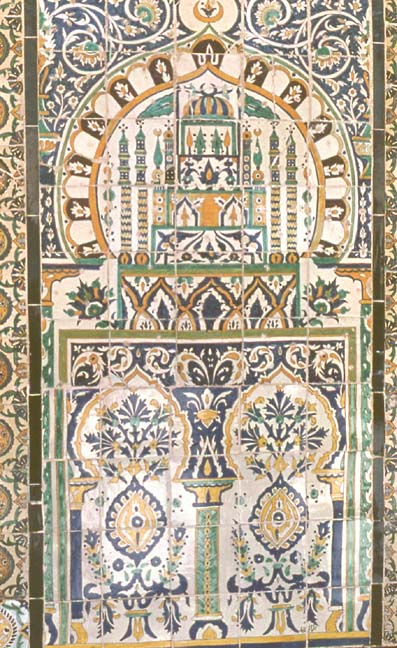
Kairouan marble
Founded in 670, Kairouan flourished under the Aghlabide dynasty in the 9th century. Despite the transfer of the political capital to Tunis in the 12th century, Kairouan remained the first holy city of the Maghreb. Its rich architectural heritage includes the Great Mosque with its columns in marble and porphyry and the 9th- century Mosque of the Three Gates.
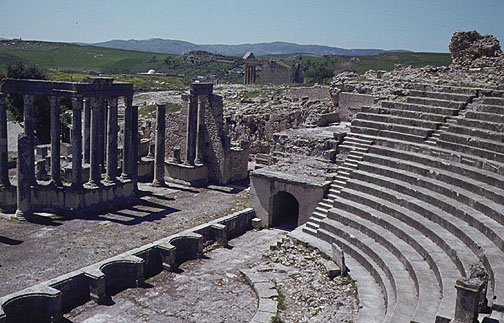
amphitheatre
Before the Roman annexation of Numidia, the town of Thugga, built on an elevated site overlooking a fertile plain, was the capital of an important Libyco-Punic state. It flourished under Roman and Byzantine rule, but declined in the Islamic period. The ruins visible today bear impressive witness to the resources of a small Roman town on the edges of the Empire.

Hagia Sophia in Istanbul
Strategically located on the Bosphorus peninsula between the Balkans and Anatolia, the Black Sea and the Mediterranean, Istanbul has been associated with major political, religious and artistic events for more than two thousand years. Its masterpieces include the ancient Hippodrome of Constantine, the 6th-century Hagia Sophia and the 16th- century Suleymaniye Mosque, which are now jeopardized by overpopulation, industrial pollution and uncontrolled urbanization.
|
Göreme National Park and the Rock Sites of Cappadocia, Turkey |
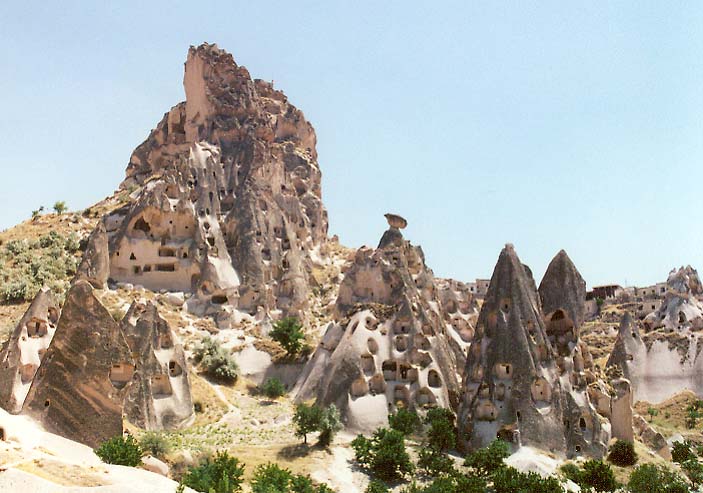
Cappadocia
In a spectacular landscape, entirely sculptured by erosion, the Göreme Valley and its surroundings contain sanctuaries hewn into the rock, providing irreplaceable evidence of Byzantine art of the post-iconoclastic period. Dwellings, troglodyte villages and underground towns representing a traditional human habitat, dating back to the 4th century, can also be seen there.
| Nemrut Dag, Turkey |
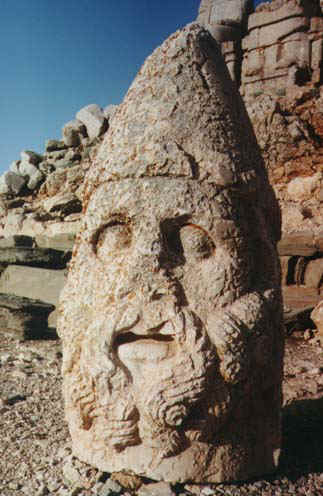
Mt. Nemrut
The mausoleum of Antiochus I (69-34 B.C.) who reigned over Commagene, a kingdom founded north of Syria and the Euphrates after the breakup of Alexander's empire, is one of the most ambitious constructions of Hellenic times. The syncretism of its pantheon, and the lineage of its kings, which can be traced back through two sets of legends, Greek and Persian, is evidence of the dual origin of this kingdom's culture.
| Hierapolis-Pamukkale, Turkey |
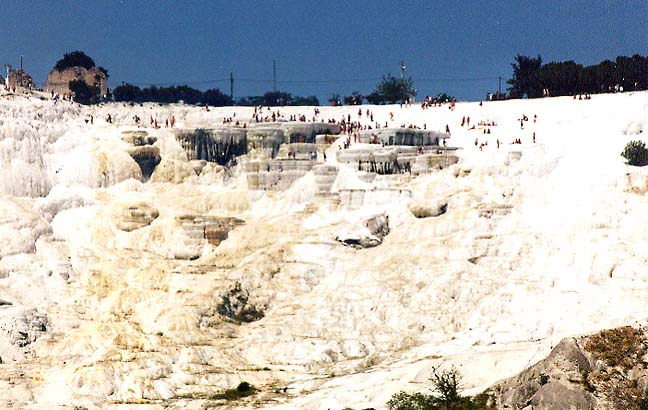
Pamukkale
From springs in a cliff almost 200 m high overlooking the plain, calcite-laden waters have created at Pamukkale ("cotton palace" in Turkish) an unreal landscape, made up of mineral forests, petrified waterfalls and a series of terraced basins. At the end of the 2nd century B.C. the dynasty of the Attalides, the kings of Pergame, set up the thermal station of Hierapolis. The site includes the ruins of the baths, temples and other Greek monuments.
| Archaeological Site of Troy, Turkey |
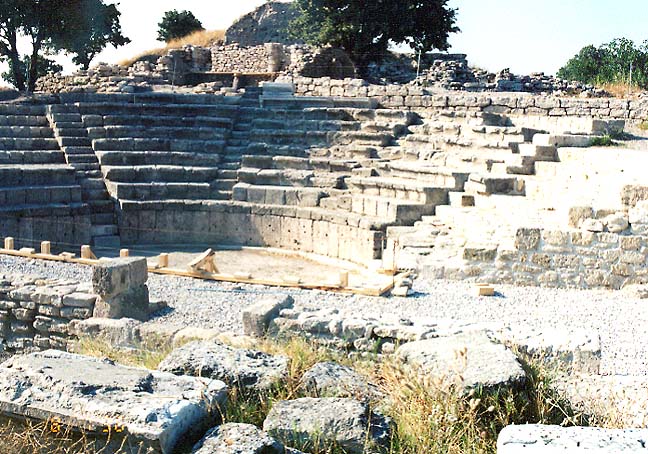
Troy
Troy, with its four thousand years of history, is one of the most famous archaeological sites in the world. The first excavations at the site were started in 1871 by the famous archaeologist Heinrich Schliemann. In scientific terms, its extensive remains are the most significant and substantial demonstration of the first contact between the civilizations of Anatolia and the Mediterranean world. Moreover, the siege of Troy by Spartan and Achaean warriors from Greece in the 13th or 12th century BC, immortalized by Homer in The Iliad, has inspired great creative artists throughout the world since that time.
| State Historical and Cultural Park "Ancient Merv", Turkmenistan |
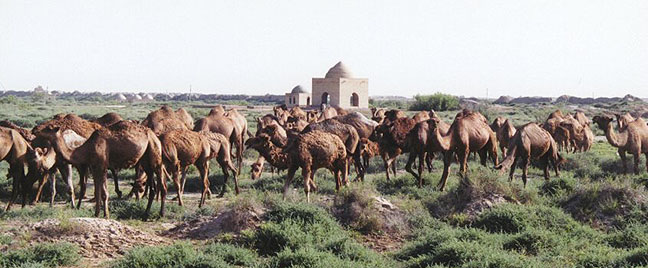
ancient city site
Merv is the oldest and most completely preserved of the oasis cities along the Silk Route in Central Asia. The remains in this wide oasis span four thousand years of human history and a number of monuments are visible, particularly from the last two millennia.
| Rwenzori Mountains National Park, Uganda |
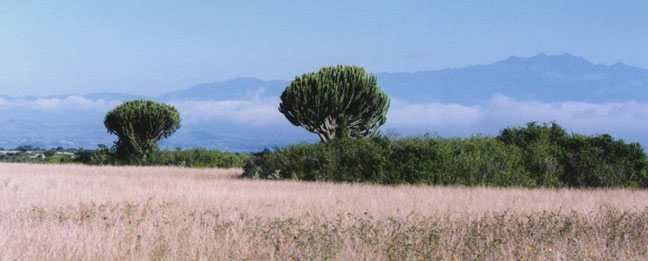
Ruwenzori
Mountains
("Mountains of the Moon")
Covering nearly 100,000 hectares in western Uganda, the park comprises the main part of the Rwenzori mountain chain, which includes Africa's third highest peak (Mount Margherita at 5,109 metres). The region's glaciers, waterfalls and lakes make it one of Africa's most beautiful alpine areas. The park protects many natural habitats, endangered species and an unusual flora, comprising, among other species, the giant heather.
| Tombs of Buganda Kings at Kasubi, Uganda |
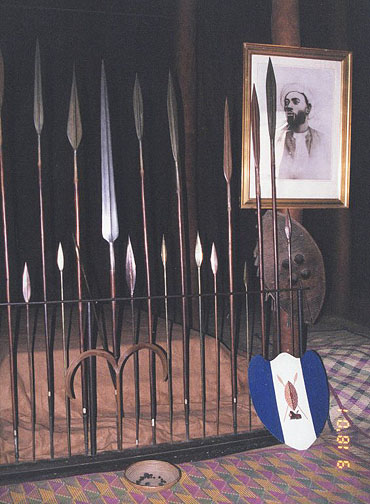
now the
burial site of the kabaka's
(swords and shields of Mutesa I)
The Tombs of Buganda Kings at Kasubi constitute a site embracing almost 30 ha of hillside within Kampala district. Most of the site is agricultural, farmed by traditional methods. At its core on the hilltop is the former palace of the Kabakas of Buganda, built in 1882 and converted into the royal burial ground in 1884. Four royal tombs now lie within the Muzibu Azaala Mpanga, the main building, which is circular and surmounted by a dome. It is a major example of an architectural achievement in organic materials, principally wood, thatch, reed, wattle and daub. The site's main significance lies, however, in its intangible values of belief, spirituality, continuity and identity.
| Blenheim Palace, United Kingdom |
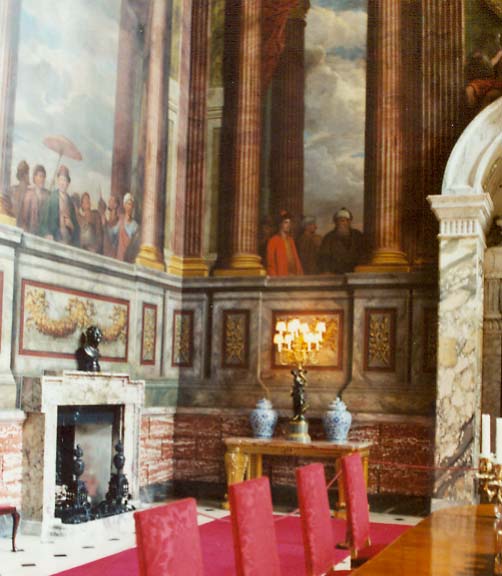
Blenheim interior
Blenheim Palace, near Oxford, stands in a romantic park created by the famous landscape gardener 'Capability' Brown. It was presented by the English nation to John Churchill, first Duke of Marlborough, in recognition of his victory in 1704 over French and Bavarian troops. Built between 1705 and 1722 and characterized by an eclectic style and a return to national roots, it is a perfect example of an 18th-century princely dwelling.
| City of Bath, United Kingdom |
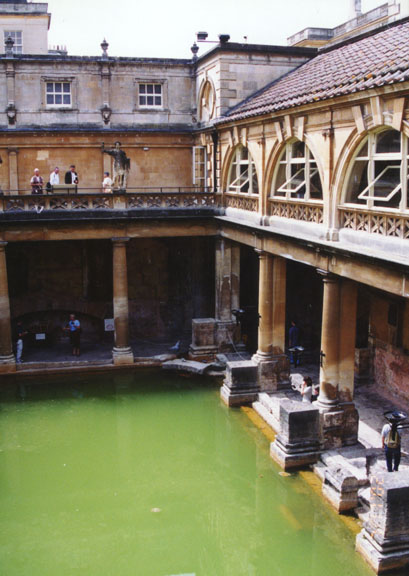
from the ancient Roman Bath
Founded by the Romans as a thermal spa, Bath became an important centre of the wool industry in the Middle Ages. In the 18th century, under George III, it developed into an elegant town with neoclassical Palladian buildings, which blend harmoniously with the Roman baths.
| Westminster Palace, Westminster Abbey and Saint Margaret's Church, United Kingdom |

Westminster Abbey
Westminster Palace, rebuilt from the year 1840 on the site of important medieval remains, is a fine example of neo-Gothic architecture. The site – which also comprises the small medieval Church of Saint Margaret, built in Perpendicular Gothic style, and Westminster Abbey, where all the sovereigns since the 11th century have been crowned – is of great historic and symbolic significance.
| Tower of London, United Kingdom |

Tower of London
The massive White Tower is a typical example of Norman military architecture, whose influence was felt throughout the kingdom. It was built on the Thames by William the Conqueror to protect London and assert his power. The Tower of London – an imposing fortress with many layers of history, which has become one of the symbols of royalty – was built around the White Tower.
My Life List of World Heritage sites I have visited
![]()
Return to Favorite Experiences page
![]()